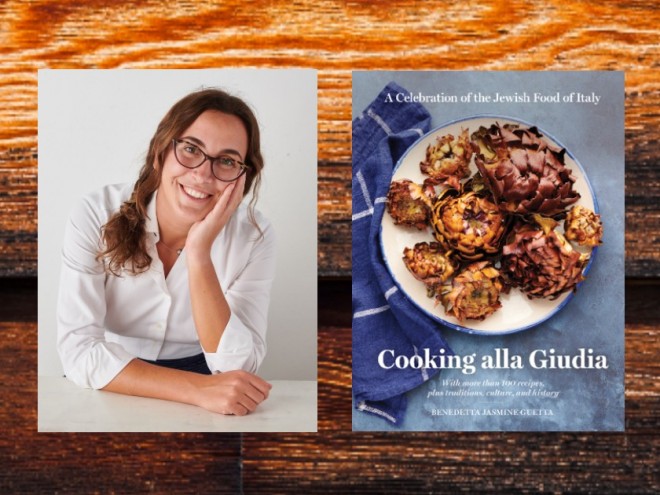Jewish and Italian food are not, at first thought, cuisines that complement one another. Jewish food — at least within the mainstream American imagination — is regarded as mostly beige and punctuated by frizzled onions, the relatively simple fare of Ashkenazic leanings. Italian food, on the other hand, recalls decadent cheeses, tart tomatoes, pops of basil and the dairy- and meat-laden pastas of Roman and Bolognese cuisine. While both are beloved, especially throughout New York and the surrounding areas, they are not seen as remotely similar, let alone deeply intertwined. In her new book, Cooking alla Giudia, Benedetta Guetta repairs this perceived schism, celebrating the rich food culture and history of Jews living in Italy.
Guetta guides readers on an expansive and inspiring tour of one of oldest Jewish communities, highlighting how Italian techniques and flavors have long been a part of the Jewish diet and vice versa. She begins the book with a brief history of Jews in Italy, from the Jews’ arrival to the Italian peninsula during the republican age of Rome, through the medieval Jewish enclaves of Sicily, the first Jewish ghetto in Venice, the Libyan communities of the twentieth century, and the modern communities in Rome and Milan.
Throughout the book, Guetta homes in on particular connections between the two cuisines. Orecchiette pasta (which means “small ears” in Italian), for example, was likely brought over by Jews from Provence — not native to Southern Italy, as most believe. Guetta writes, “The Jews of Provence celebrated Purim with a special pasta called … oznei galahim (”ears of priests”) … which translates in Italian to orecchie dei preti,”a name that is still used in small towns of the Puglia region today. Additionally, Guetta includes many recipes unique to Jewish Italians — recipes like “Pharaoh’s Wheel,” a savory baked pasta dish with many symbolic nods to the Israelites’ exodus from Egypt and Italian-style hamin.
Cooking alla Giudia also makes space for kashrut, presenting not one but two kosher versions of spaghetti alla carbonara, a Roman pasta dish. One uses dried beef or turkey bacon — satiating those looking for the meatiness of traditional carbonara — while the other is an unctuous vegetarian spin. Other kosher adaptations include pasta amatriciana and charcuterie.
While the book’s histories and tales alone make it a worthy addition to any food, history, or culture buff’s library (or that of anyone learning Italian, since the name of each recipe is written in Italian as well as English), Guetta’s recipes are compelling and unexpected. Modern in taste, and welcoming in presentation, and they offer up the best of both Jewish and Italian cuisine.
Hannah Kressel is a current fellow at the Pardes Institute of Jewish Studies in Jerusalem. She holds a Masters in Art History from the University of Oxford and a Bachelors in Art History and Studio Art from Brandeis University. Her research examines the intersection of contemporary art, food, and religion. She is an avid baker and cook.



